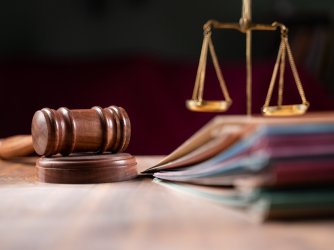Table of Contents
Key lessons from landmark Tinker ruling still resonate today
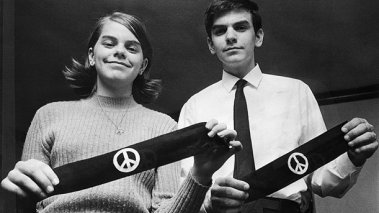
ACLU
Mary Beth and John Tinker display their black armbands in 1968.
In 1965, several students attending public schools in the Des Moines Independent Community School District planned to wear black armbands to class in protest of the Vietnam War. Four of those students — John, Mary Beth, Hope, and Paul — were from the Tinker family, which was known for its anti-war and civil rights activism.
When district officials learned of the students’ protest plan, they quickly created a policy prohibiting armbands on school grounds. In defiance of the new policy, students wore the armbands anyway, and on Dec. 16 and 17, John and Mary Beth — and their friend Christopher Eckhardt — were suspended from school.
In response, the Tinkers sued the school district and the case worked its way up to the Supreme Court, where, in 1969, the Tinkers secured one of the most important First Amendment legal victories for K-12 students in the twentieth century.
Lessons from the Supreme Court’s seminal free speech decision in Tinker v. Des Moines Independent Community School District continues to resonate for school officials, students, parents, and citizens alike. Even though the Court decided Tinker nearly 55 years ago, it remains the leading student K-12 decision and lower courts apply the standards from Tinker with regularity.
In Tinker, the Court reaffirmed that public school students are persons who possess constitutional rights even while on school grounds. As Justice Abe Fortas wrote, “It can hardly be argued that either students or teachers shed their constitutional rights to freedom of speech or expression at the schoolhouse gate.”
It is hard to overstate the importance of the Supreme Court’s ruling in Tinker. It established that public school students have a voice in their own schools that cannot be muted or silenced simply because officials don’t like the expression.
And the Court did more than reaffirm precedent: It established a test to determine when public school officials cross the line into unconstitutional overreach. The primary test from Tinker is the “substantial disruption” test, which states that public school officials may only censor student speech that causes a substantial disruption or material interference with school activities. Today, most courts apply this as the “reasonable forecast” of substantial disruption, noting that school officials do not have to wait for an actual riot or serious disruption before acting. The Court also mentioned that students cannot invade or infringe on the rights of others, although it did not explain that language specifically.
Now, 54 years after the Court’s ruling in Tinker, four key lessons from Tinker remain especially relevant.
First, public school officials must recognize and respect the fact that students — as the future leaders of the country — are indeed persons deserving of respect and of constitutional freedoms. How can these future leaders of the country respect constitutional freedoms if they do not grow up in an environment that teaches them the importance of freedom and self-expression in a constitutional democracy? Students are not automatons who can be programmed to act and think just like school officials might like them to do.
Justice Fortas wrote it more memorably: “[S]tudents may not be regarded as closed-circuit recipients of only that which the State chooses to communicate. They may not be confined to the expression of those sentiments that are officially approved.”
Second, public school officials must point to specific, articulable, and reasonable grounds to justify punishing or prohibiting student speech. They may not act on what Justice Fortas referred to as “undifferentiated fear or apprehension of disturbance,” which he said was not “enough to overcome the right to freedom of expression.” Under Tinker, school officials cannot censor student speech simply because they don’t like it, find it offensive, or have a vague, amorphous feeling that it might cause problems — they can only act on concrete evidence of actual or threatened substantial disruption, not abject speculation. (That being said, Tinker’s broad protections have been eroded by subsequent decisions. In Bethel School District v. Fraser (1986), the Court carved out an exception for vulgar and lewd speech; in Hazelwood School District v Kuhlmeier (1988), the Court established a lower standard for school-sponsored speech; and, in Morse v. Frederick (2007), the Court created an exception for speech that school officials reasonably regard as advocating the illegal use of drugs.)
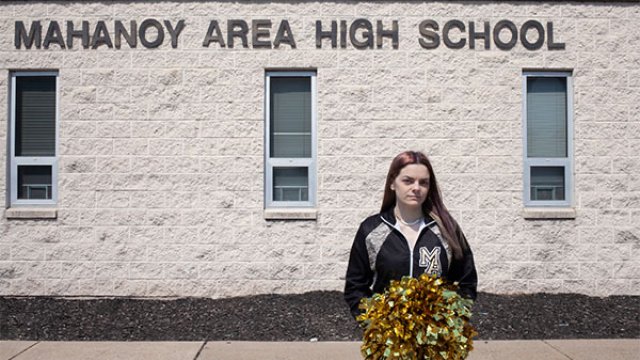
First Amendment News 302.2: Supreme Court breathes new life into Tinker and rules in favor of student speech
Blog
Third, school officials must appreciate that any disruption allegedly caused by student speech must be substantial. Speech that is mildly disruptive or challenging to the status quo does not rise to the level of substantial disruption. At oral argument in Tinker, Justice Thurgood Marshall thundered home this point when he asked the school’s attorney how many students wore the black armbands. When the attorney replied that only seven wore the armbands, Marshall delivered the knockout blow: “Seven out of eighteen thousand, and the school board was afraid that seven students wearing armbands would disrupt eighteen thousand. Am I correct?” The late Christopher Eckhardt — one of the plaintiffs along with Mary Beth and John Tinker — later told me in an interview that when he heard Justice Marshall’s question, he knew the students would prevail.
Fourth, the Tinker case highlighted the danger posed by public school officials who engage in viewpoint discrimination. In Tinker itself, public school officials targeted the black peace armbands but allowed students to wear other symbols, such as Iron Crosses and political campaign buttons. This raised the real specter that public school officials were targeting the students’ political, anti-war speech. Fortas identified this viewpoint discrimination as a major problem, writing, “Clearly the prohibition of expression of one particular opinion, at least without evidence that it is necessary to avoid material and substantial interference with schoolwork or discipline, is not constitutionally permissible.”
It is hard to overstate the importance of the Supreme Court’s ruling in Tinker. It established that public school students have a voice in their own schools that cannot be muted or silenced simply because officials don’t like the expression.
Today, Tinker remains the key precedent for student expression in the United States of America, standing for the idea that our default position should be protection for individual expression and freedom, not censorship.
Recent Articles
FIRE’s award-winning Newsdesk covers the free speech news you need to stay informed.
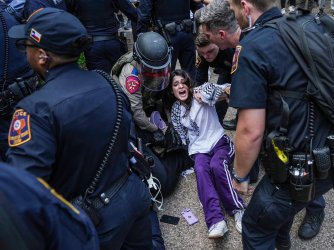
Texas tramples First Amendment rights with police crackdown of pro-Palestinian protests
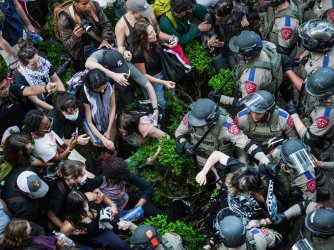
Here’s what students need to know about protesting on campus right now
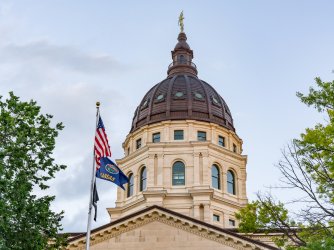
Kansas takes a stand for intellectual freedom
